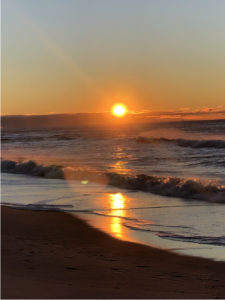 Early in my career, I met with a young couple, let’s call them Lili & Joe. They had just purchased a coop in a hi-rise along the boardwalk in a waterfront community and needed a shade for their bedroom window. Lili had a picture in her mind’s eye. She wanted something ‘beachy’ and had seen a shade that looked like bamboo at a friend’s place.
They say a little knowledge can be a dangerous thing and with the little knowledge that came with a month or two’s experience, I described & recommended woven wood shades (WW). Lili didn’t take long selecting a swatch from the pattern book that was just what she had in mind.
I measured, took a deposit and said ‘allow 3-4 weeks for delivery’. I was proud of myself for recognizing the product from Lili’s description and by the end of the day there was a raw spot on my back from all of my self-congratulatory patting.
Three weeks later, I installed the shade myself on a Saturday morning and Lili & Joe were thrilled. The color accents were perfect and they loved the way the sunlight played through the irregular natural bamboo material. ‘Excellent choice!’ I said.
On Sunday, my only day off, I caught up on order entries and other administrative chores.
On Monday Lili called, sounding a bit sheepish. ‘I didn’t want to bother you on Sunday but Joe & I noticed an awful lot of sun coming through the shade that woke us up at 6:30. Is there anything we can do?’ I assured her I would look into it.
As I was to learn, most WW materials offer little in the way of privacy or light control unless ordered with a liner. As a green rookie, I had failed to recommend a room-darkening liner (RDL) for their shade in an EAST facing window by the ocean. Duh.
I did not know yet that manufacturers are generally unwilling to take back and alter custom shades. So, my choice was to try to fit a darkening roller shade behind the offending WW or to reorder the shade with a RDL. Neither choice was appealing.
After all these years, I can’t recall which path I took but realizing that the fault was mine, I did what I had to and learned an expensive lesson.
Early in my career, I met with a young couple, let’s call them Lili & Joe. They had just purchased a coop in a hi-rise along the boardwalk in a waterfront community and needed a shade for their bedroom window. Lili had a picture in her mind’s eye. She wanted something ‘beachy’ and had seen a shade that looked like bamboo at a friend’s place.
They say a little knowledge can be a dangerous thing and with the little knowledge that came with a month or two’s experience, I described & recommended woven wood shades (WW). Lili didn’t take long selecting a swatch from the pattern book that was just what she had in mind.
I measured, took a deposit and said ‘allow 3-4 weeks for delivery’. I was proud of myself for recognizing the product from Lili’s description and by the end of the day there was a raw spot on my back from all of my self-congratulatory patting.
Three weeks later, I installed the shade myself on a Saturday morning and Lili & Joe were thrilled. The color accents were perfect and they loved the way the sunlight played through the irregular natural bamboo material. ‘Excellent choice!’ I said.
On Sunday, my only day off, I caught up on order entries and other administrative chores.
On Monday Lili called, sounding a bit sheepish. ‘I didn’t want to bother you on Sunday but Joe & I noticed an awful lot of sun coming through the shade that woke us up at 6:30. Is there anything we can do?’ I assured her I would look into it.
As I was to learn, most WW materials offer little in the way of privacy or light control unless ordered with a liner. As a green rookie, I had failed to recommend a room-darkening liner (RDL) for their shade in an EAST facing window by the ocean. Duh.
I did not know yet that manufacturers are generally unwilling to take back and alter custom shades. So, my choice was to try to fit a darkening roller shade behind the offending WW or to reorder the shade with a RDL. Neither choice was appealing.
After all these years, I can’t recall which path I took but realizing that the fault was mine, I did what I had to and learned an expensive lesson. I want the levolors
Customers frequently called my business asking for “levolors”. After sighing to myself, I’d gently ask them to be more specific. “Is there
